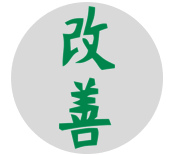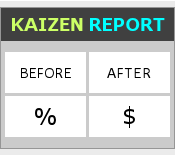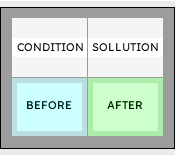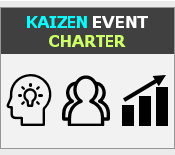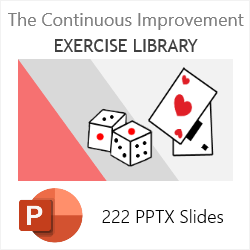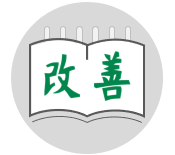
Also known as Kaizen Workshop, Kaizen Workout, Improvement Event, Kaizen Blitz, and Rapid Improvement Event.
Related topics include Corrective Action Event, Quality Cycle, and Focus Group.
What is a Kaizen Event?
A Kaizen event is a short, focused activity where a team works together to improve a process or work area. Instead of waiting months to solve a problem, the team acts immediately. During a Kaizen event, the team works to identify root causes, brainstorm solutions, and implement immediate improvements. Think of it as a “mini-improvement mission” compared to bigger programs like Lean or Six Sigma.
Kaizen events are usually short, lasting 3–5 days, though some take only 1–2 days for smaller problems. The idea is to bring together a focused team, almost like a special mission team, to tackle a challenge quickly. It’s a bit like doing a weekend home renovation project so that everyone joins in, works hard, and by the end, you see real change. Improvements are made during or right after the event, not months later.

Where Can It Be Used?
Kaizen events aren’t just for factories. They can improve healthcare, logistics, warehouse operations, construction sites, and even offices. Teams can use them to cut waste, reduce cycle times, improve safety, shorten waiting times, improve customer service, and organize workplaces using 5S. The key is to make small, focused improvements instead of trying to fix everything at once.
Kaizen works best when the problem is clear, well-defined, and not too big. It’s perfect when the issue causes delays, waste, or poor quality and when fast results are needed. It’s also effective when the right people are available and when team creativity is needed. Kaizen events are especially powerful in the early stages of Lean deployment, as they create quick wins and inspire employees to actively participate in solving problems and driving positive change.
Types of Kaizen Events
There are different types of Kaizen events, and each type plays an important role in helping companies make continuous improvements, ranging from small fixes in a single area to large-scale changes that enhance entire systems and create lasting positive impact.
- Flow Kaizen Events: Focus on improving the entire value stream, and how materials, information, or services move from start to finish.
- Line Kaizen Events: Improve a full production or service line, which include several connected processes working together.
- Point Kaizen Events: Target a specific issue or small area, usually where waste or inefficiency is most visible.
- System Kaizen Events: Improve company-wide systems, policies, or management practices.
Participation
A Kaizen event brings people together from different parts of a company to focus fully on one problem. Team members are chosen in advance and set aside their normal jobs during the event. They should be treated as if they are on vacation from their regular responsibilities. A typical team includes:
- A Team leader: Keeps the team moving toward the goal.
- A facilitator: Guides the process, manages logistics, and ensures Lean principles are applied.
- Team members: Cross-functional people who understand the process.
Other team members may also join the event to support and help implement the improvements, such as sponsors, process owners, and those who originally suggested the ideas.

Approach to Kaizen
A typical Kaizen event begins with selecting the right problem, one that is significant to the business and can create real impact. The chosen problem should be small yet capable of generating meaningful improvements. The more specific you can be, the better.
The focus should be placed on core processes rather than management issues, while avoiding problems that require major capital investment. The goal is to plan carefully, prioritize wisely, and keep improving step by step.

Kaizen activities can be implemented through the following steps:

Click to enlarge image
Specific supplies and toolbox are needed in the area where the Kaizen event is taking place. In production areas, supplies may include basic hand tools, tape measures, timers, scissors, marking tape, cleaning materials, safety equipment, carts, and bins. Other common supplies include whiteboards or flip charts, markers, pens, notepads, sticky notes, rulers, cameras, labels, and calculators.

Click to enlarge image
The Kaizen event should be officially announced and communicated to all participants well in advance. Distribute the announcement and relevant information at least one week before the event to ensure everyone has sufficient time to prepare effectively.
Many tools and templates are available to support Kaizen events and help turn Kaizen from an idea into real action. These tools ensure that ideas are captured, progress is tracked, and improvements are measured. Such tools and templates may include:
- Kaizen Proposal Form: Used to submit improvement ideas in a structured format.
- Kaizen Event Charter: Used to outline the scope, goals, team, and timeline for the event.
- Kaizen Event Preparation Checklist: Used to track readiness before the event.
- Kaizen Agenda: Used to detail the timeline and activity schedule.
- Kaizen Activity Sheet: Used to captures what improvement activities were performed.
- Kaizen Board: Used to track problems, ideas, actions, and improvements in real time.
- Kaizen Newspaper: Used during and after Kaizen events to ensure all identified actions are tracked and completed.
- Kaizen Progress Chart: Used to track and visualize overall progress against plan.
- Kaizen Report: Used to summarizes the Kaizen event.
- Kaizen Event Benefit Matrix: Used to evaluate the benefits achieved across various performance areas.
- Post-Implementation Review: Used to evaluate the overall success of the event through regular reviews.
- Kaizen Follow-Up Sheet: Used to track follow-up actions after a Kaizen event.

Click to enlarge image
After the event, a kaizen report should be prepared to summarize what was accomplished, the improvements made, and how the gains will be sustained. The report may include charts, process maps, before-and-after photos, and key results from the event. It can be shared across the organization to encourage learning and the application of similar improvements. Management should review the report, approve the changes, and formally recognize the team for their contributions.

Click to see an example
Kaizen event reports help turn improvements into lasting best practices. The most effective ideas and methods should be reviewed and shared so they can be replicated in other lines or departments. This way, every Kaizen event helps the whole organization keep improving and learning together.
The results of Kaizen events should be documented, shared, and visibly posted at the end of the event to communicate achievements, lessons learned, and next steps to all employees. There are many ways to share Kaizen activities, including public display boards, email updates, and the company intranet. Management should recognize and thank the team for their dedication and collaboration, celebrating the success of the Kaizen event.

If a solution doesn’t work, it’s okay. Learn from it and try again with a changed approach. Continuous improvement is not about perfection on the first try. It’s about persistence, reflection, and steady progress toward excellence.

There are many tools that can help in reporting Kaizen events. One of the simplest and most straightforward ways is to use this Kaizen report template.
Wrapping Up
Kaizen events are powerful because they deliver fast results while building teamwork and problem-solving skills. They improve safety, quality, speed, and costs with less effort than big projects. Even one small Kaizen event can make a dramatic difference. Most importantly, they create a culture where employees feel ownership, share ideas, and keep improving every day. Kaizen proves that small steps really can lead to big changes.
References
Rob, M. Crown Holdings. Process Improvement Program.
Imai, M. Kaizen: The Key to Japan’s Competitive Success. McGraw-Hill.
Kubiak, T. M. The Certified Six Sigma Master Black Belt. Infotech.
Other Formats
Slides
Poster
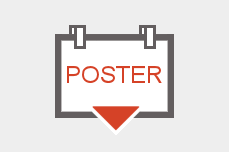
Infographic

Related Articles
Related Templates

